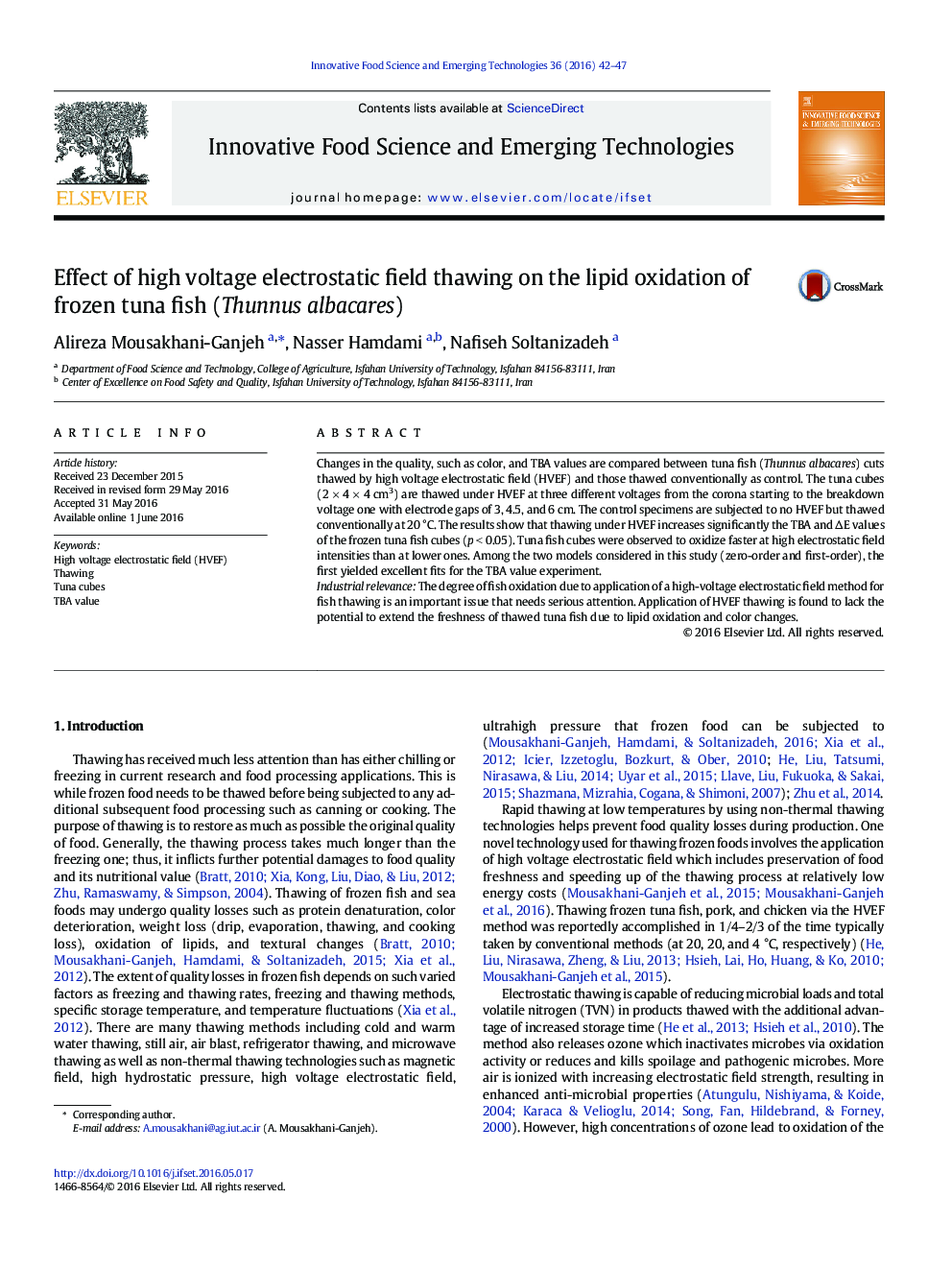| کد مقاله | کد نشریه | سال انتشار | مقاله انگلیسی | نسخه تمام متن |
|---|---|---|---|---|
| 2086312 | 1545530 | 2016 | 6 صفحه PDF | دانلود رایگان |

• Impact of HVEF on the thawing of frozen tuna fish investigated.
• Thawing under HVEF increases significantly the TBA of the frozen tuna fish cubes
• Thawing under HVEF significantly increased and ΔE values of the frozen tuna fish.
• Tuna fish cubes were observed to oxidize faster at high electric field intensities than at lower ones.
Changes in the quality, such as color, and TBA values are compared between tuna fish (Thunnus albacares) cuts thawed by high voltage electrostatic field (HVEF) and those thawed conventionally as control. The tuna cubes (2 × 4 × 4 cm3) are thawed under HVEF at three different voltages from the corona starting to the breakdown voltage one with electrode gaps of 3, 4.5, and 6 cm. The control specimens are subjected to no HVEF but thawed conventionally at 20 °C. The results show that thawing under HVEF increases significantly the TBA and ΔE values of the frozen tuna fish cubes (p < 0.05). Tuna fish cubes were observed to oxidize faster at high electrostatic field intensities than at lower ones. Among the two models considered in this study (zero-order and first-order), the first yielded excellent fits for the TBA value experiment.Industrial relevanceThe degree of fish oxidation due to application of a high-voltage electrostatic field method for fish thawing is an important issue that needs serious attention. Application of HVEF thawing is found to lack the potential to extend the freshness of thawed tuna fish due to lipid oxidation and color changes.
Journal: Innovative Food Science & Emerging Technologies - Volume 36, August 2016, Pages 42–47